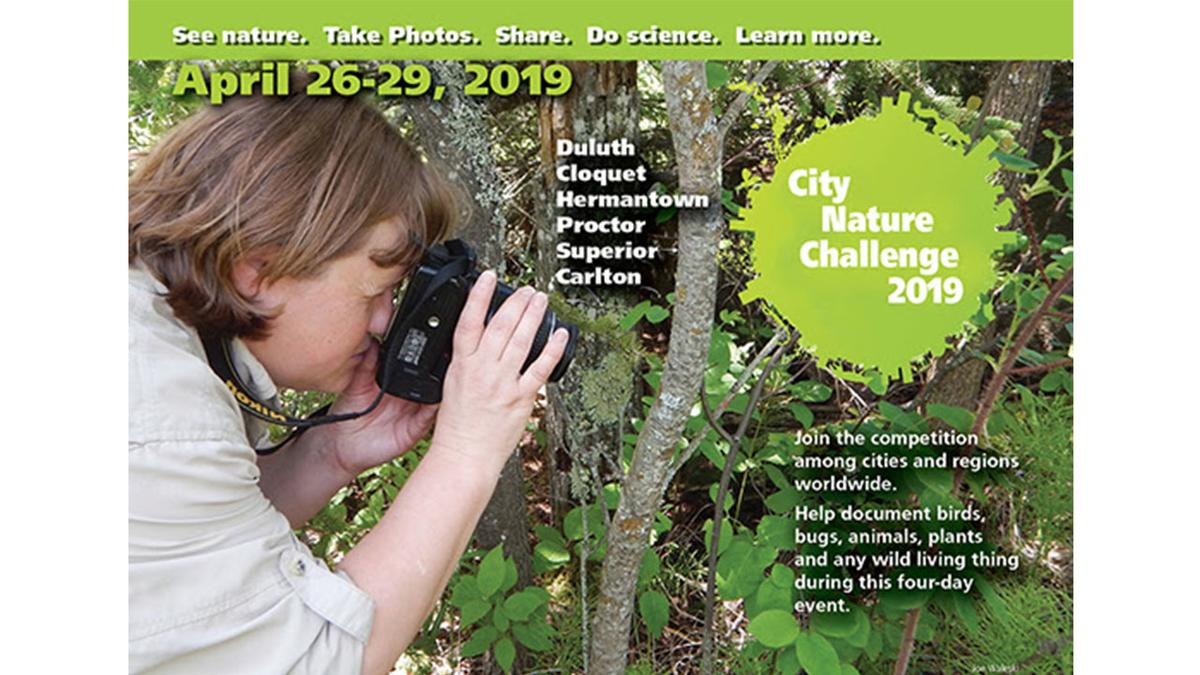Calling all curious people to take to their city streets, April 26–29, to observe nature and submit pictures of plants and animals for the 2019 Twin Ports City Nature Challenge.
“This global event is for everyone,” said Marte Kitson, Minnesota Sea Grant environmental literacy extension educator. “Participating in the City Nature Challenge is a fantastic reason to get outside, use technology to document nature, and enjoy time learning about the living world. Plus, learning what lives here now can be useful in the future.”
City Nature Challenge is a multicity, global event that calls on current and aspiring community scientists, nature and science fans and people of all ages and science backgrounds to observe and submit pictures of plants, animals and fungi using the free app iNaturalist.”
This is the third year for the Twin Ports event, which includes the cities of Carlton, Cloquet, Duluth, Hermantown and Proctor, Minnesota and Superior, Wisconsin. 2019 is the fourth year of the event which is expected to draw 750,000 observations from more than 25,000 people in more than 150 cities.
“There is nature in every city and one of the best ways to study it is to connect community members and scientists through citizen science,” said Kitson. “Scientists can’t be everywhere at once and community observations helps ensure both common and incredible finds aren’t missed.”
With human populations worldwide increasingly concentrated in cities, the study of urban biodiversity is important to the future of plants and wildlife on Earth. Large pools of data, including those built through iNaturalist, natural history museums and science organizations, can help authorities make informed decisions that enable humans to coexist sustainably with the plants and animals in their neighborhoods.
“There are wild spaces in our cities that host a variety of living things that you might not know are there,” said Kitson.
For both budding and veteran citizen scientists, participating is easy:
- Find wildlife. It can be any plant, animal, fungi, slime mold or any other evidence of life (for example, scat, fur, tracks, shells, carcasses) found in your participating city.
- Take a picture of what you find, and be sure to note the location of the critter or plant.
- Share your observations by uploading your findings through iNaturalist.
“Spring has arrived in northern Minnesota and the Twin Ports City Nature Challenge is a great reason to take a break from your busy day, hopefully soak up some sunshine, enjoy observing the world around you, and contribute to science,” said Kitson.
CONTACT:
Marte Kitson, Minnesota Sea Grant environmental literacy extension educator, [email protected], 218-726-8305.
Learn more about Minnesota Sea Grant.
